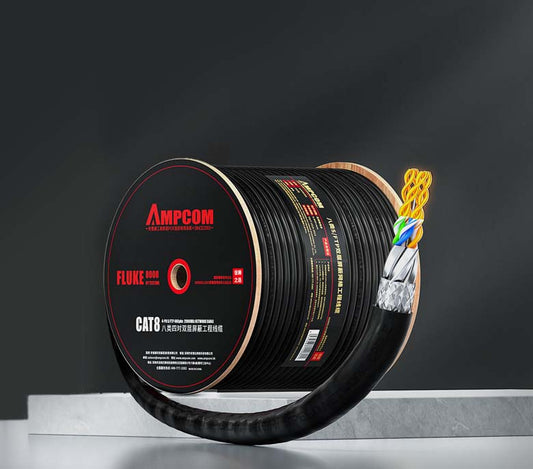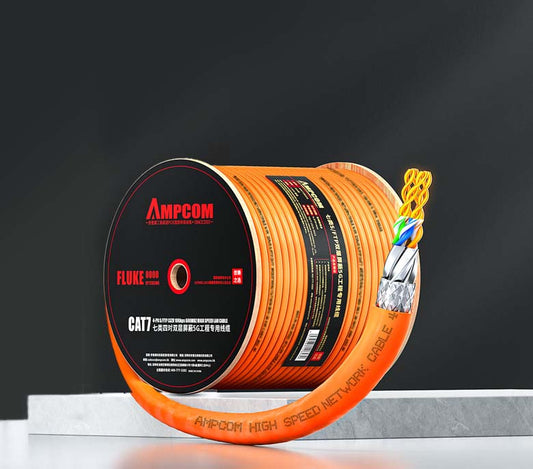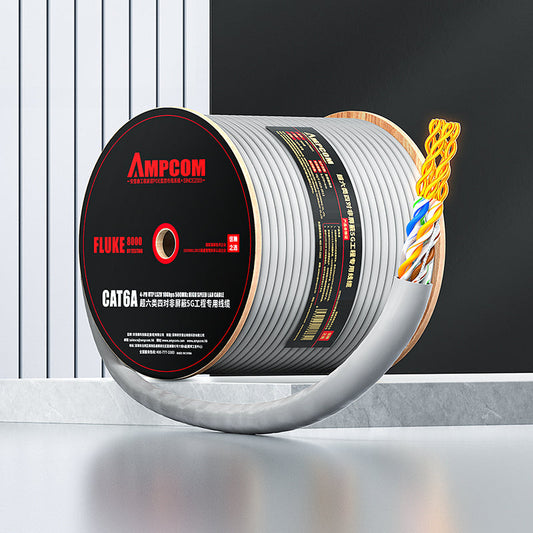Color Coding & Labeling Best Practices (Reduce MTTR in Moves/Adds/Changes)
Proper cable color coding and labeling are essential for effective network management, reducing Mean Time to Repair (MTTR) during moves, adds, and changes. This guide explains how to follow TIA standards for optimal network performance, streamlined operations, and enhanced troubleshooting capabilities.
Last updated:
TL;DR
- TIA Labeling Standards: Implement clear, standardized labeling to ensure easy cable identification and minimize confusion.
- Color Coding: Use specific colors to distinguish cable types and functions, simplifying maintenance and troubleshooting.
- Key benefits: Reduced MTTR, improved network uptime, streamlined troubleshooting, and enhanced network performance.
- Pro Tip: Maintain labels that are easily visible and legible for minimal disruption during maintenance or network changes.
Why Cable Labeling is Essential for Network Efficiency
Efficient network management hinges on the ability to quickly identify, troubleshoot, and modify network connections. Cable labeling plays a critical role in making this process faster and more accurate. Properly labeled cables provide several advantages during:
- Moves, Adds, and Changes (MACs): Clear labeling makes it easier to reconfigure your network by ensuring that the right cables are connected to the right devices, reducing MTTR.
- Preventing Human Error: Mislabeling or poor labeling can lead to network configuration mistakes, which can disrupt the flow of data and cause unnecessary downtime.
- Future-Proofing the Network: As networks expand and evolve, clear labeling ensures future upgrades or troubleshooting processes are faster and more straightforward.
Ultimately, an organized labeling system prevents confusion and provides better control over your network infrastructure, leading to better long-term management and reliability.
Best Practices for Cable Color Coding
Color coding is an effective way to organize and categorize cables by their function. It allows technicians to identify cables quickly, improving both speed and accuracy when troubleshooting or maintaining the network. Here are some common color coding schemes used in data centers and enterprise networks:
- Blue: Typically used for Ethernet cables like Cat5e, Cat6, and Cat6a, this color is used for general network use, connecting devices such as computers, printers, and switches.
- Red: Reserved for critical connections like servers, storage systems, or vital infrastructure. This color ensures that the most important network components are easy to find in emergencies.
- Green: Often used for voice systems or non-core network devices, such as phones, cameras, or building management systems.
- Yellow: Used to mark PoE (Power over Ethernet) connections, which are responsible for both power and data transmission. This helps technicians quickly identify cables delivering power to devices like IP cameras or access points.
By color-coding your network cables, you can significantly reduce the time it takes to identify which cable serves what purpose, making repairs or upgrades easier and faster.
Adhering to TIA Labeling Standards
The Telecommunications Industry Association (TIA) has established comprehensive labeling standards to ensure consistency and clarity in network installations. Adhering to these standards helps prevent confusion and errors. Key aspects of TIA labeling standards include:
- Label Placement: Labels should be placed at both ends of the cable to ensure easy identification and access.
- Label Format: Labels should contain critical information, including cable type, length, origin, and destination, presented in a standardized format to ensure uniformity across the network.
- Legibility: Labels should be printed in large, easy-to-read fonts and made from durable materials that will not fade or peel over time, ensuring that they remain legible even in harsh environments.
By following TIA standards, you can guarantee that your network’s cables are properly labeled, providing clear and consistent identification across your organization.
Common Cable Labeling Mistakes to Avoid
While labeling is essential, there are several common mistakes that network professionals should avoid to maintain an efficient network:
- Inconsistent Labeling: Using inconsistent formats or color schemes for cable labels can create confusion and make it more difficult to track cables, especially during troubleshooting.
- Unclear or Faded Labels: Labels that are too small, unclear, or have faded over time can lead to misidentification and delays in network repairs.
- Overcrowded Labels: Trying to fit too much information on a single label can make it difficult to read. Stick to the essential details, such as cable type and destination.
Benefits of Proper Cable Labeling
Implementing proper labeling and color coding practices yields multiple benefits that are crucial for maintaining a functional, high-performance network:
- Faster Troubleshooting: Properly labeled cables reduce the time needed to diagnose and resolve network issues, minimizing downtime and reducing maintenance costs.
- Improved Compliance: Consistent labeling ensures compliance with industry standards, such as those set by the TIA, making your network more reliable and legally compliant.
- Better Network Management: Clear, consistent labeling allows for easier scaling of the network. It helps in adding new devices or upgrading existing systems without confusion.
Next Steps
Start by reviewing your existing cabling setup and organizing your labeling scheme. Follow TIA standards, adopt color coding for easy identification, and ensure that labels are visible, durable, and easy to read. By doing so, you'll improve network management, reduce downtime, and streamline troubleshooting.
FAQs
What is TIA labeling?
TIA labeling refers to the guidelines established by the Telecommunications Industry Association for properly labeling network cables to ensure consistency and clarity across all components of the network.
Why is cable color coding important?
Color coding helps reduce confusion by allowing network professionals to quickly identify cables based on their function. It also speeds up troubleshooting and network maintenance.
How can I implement cable labeling best practices in my network?
To implement best practices, follow TIA standards, use readable and consistent labels, and color code cables based on their function. Ensure that labels are placed in accessible areas and are made from durable materials.



